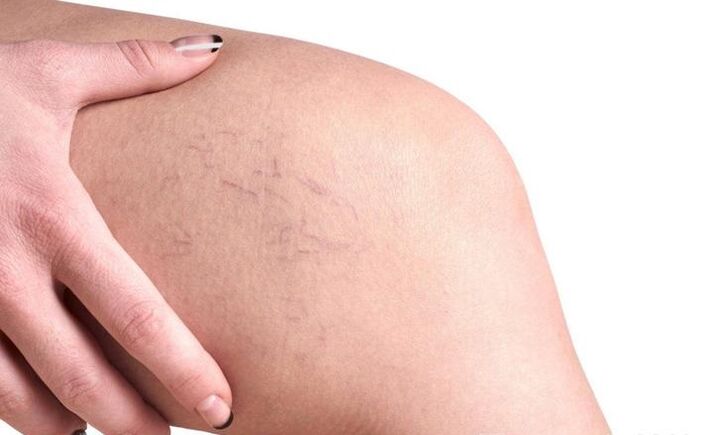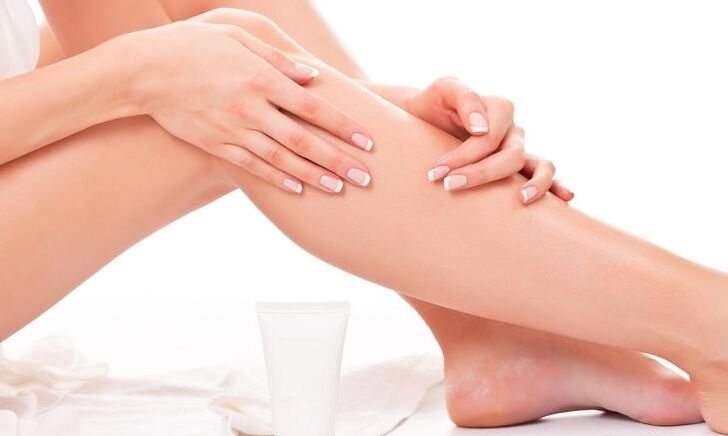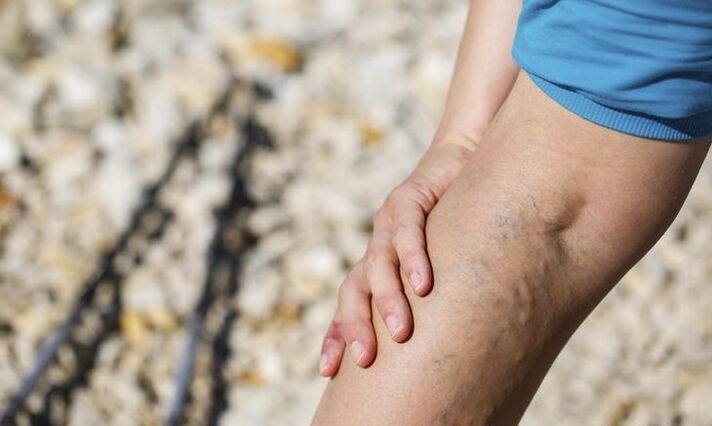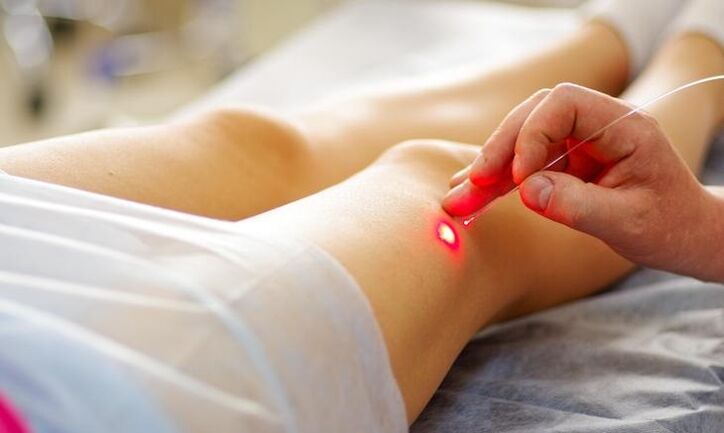Varicose veins are a serious disease that significantly interferes with quality of life, and without timely treatment makes it unbearable.
That is why it is important for everyone who faces such problems to know the causes of varicose veins, their manifestations, and most importantly, study the best methods to treat the disease.

General information
Varicose veins are a chronic vascular disease that develops as a result of blood stasis (usually in the lower legs). This is due to failure of the vascular valves, which usually flow blood exclusively upwards, from the bottom of the legs to the heart. The trapped blood puts pressure on the walls of the blood vessels, as a result of which it becomes thinner, loses elasticity and deforms, expands significantly. On the feet of such patients with the naked eye, one can see the "snakes" of blood vessels moving over the skin, and in some places forming "knots" of varicose veins.
Causes of varicose veins
There are several reasons for the development of this disease. In particular, varicose veins can cause:
- "Bad" offspring. Varicose veins are encountered by people who have congenital weakness of the valve apparatus or venous wall.
- Venous pressure increases. Often, factors that increase blood pressure lead to diseases such as, pregnancy, obesity, constant vertical load (when a person stands on his feet for a day), inactive lifestyle (inactive work).
- Taking hormone medication. Certain hormone medications, such as high estrogen birth control pills, cause blood clots and can cause varicose veins.
- Violation of blood circulation. This disorder can occur due to poor physical activity, smoking, wearing shoes that are too tight, or chronic constipation.
- Hormonal disorders associated with age -related changes in the body.

Manifestations and complications of the disease
Doctors note that varicose veins are not so terrible on themselves because of its dangerous complications. Indeed, in the first stage of disease development, the expansion of the saphenous vein is an aesthetic problem for a person (from which women suffer). First, vascular networks appear in the skin - so -called "cobwebs". At the same time, a person begins to feel heaviness in the legs, notices swelling of the limbs and feels pain while walking. These are important symptoms of varicose veins, which should not be ignored. If a person is not in a hurry to see a doctor and find out the cause of his illness, he is at risk of developing varicose veins and facing problems that cannot be solved without surgery.
With the development of varicose veins, the skin in the lower leg area becomes denser and becomes bluish. The patient's calves begin to "whine" even with a short walk, and under the skin you can see swelling of the veins. Moreover, over time, such veins become very painful.
But this is just the beginning of a serious health problem. If a person does not begin to fight the existing disease, irreversible changes begin to occur in the skin around the affected veins, as a result of which lipodermatosclerosis develops, and then trophic ulcers appear. Moreover, without treatment, the inner walls of the veins become inflamed and provoke blood clotting. This is how thrombophlebitis develops. As the size increases, blood clots block the venous lumen, and at any time a clot can come out. And this situation is fraught with death.
Therefore, it is quite clear that varicose veins need to be treated. And you need to start therapy as early as possible. Next, we will consider methods of treatment of this serious disease.
Drug treatment
In the complex therapy of varicose veins, medication must be used. A large number are capsules or tablets, which have a versatile effect on the body. In particular:
- Phlebotonics. The drug increases blood flow, prevents the development of thrombosis, and at the same time improves the tone of the vascular wall. It is not possible to get rid of varicose veins with such medications, but they are quite capable of relieving swelling of the feet, relieving the burning sensation and pain.
- Blood thinners. These drugs thin the blood and promote better blood circulation, preventing the development of thrombosis. Medications are only prescribed individually, and the time of application is set by the doctor.
- Anti-inflammatory drugs. These include pills, ointments and gels that relieve pain, relieve swelling and prevent platelets from sticking together. More importantly, these drugs prevent the inflammation of the veins that leads to thrombophlebitis.

Stockings and tights from varicose veins
Fair sex is faced with varicose veins more often than men. This is largely due to hormonal changes that occur in a woman’s body (menopause, pregnancy). That is why the most optimal way to prevent varicose veins is to wear tight or tight stockings. Such compression underwear presses on the legs and prevents varicose veins, which means it is an excellent prevention of varicose veins. If there is an already advanced disease, such underwear protects the feet from pain, swelling and fatigue.
Hydrotherapy
Treatment of varicose veins with water has been known since time immemorial. At different temperatures, the veins narrow and widen, which helps increase their elasticity. Knowing this, modern doctors use hydrotherapy in the early stages of the development of varicose veins, when new vascular tissue begins to appear in the skin. Moreover, depending on the problem at hand, bathing can be done locally (only for the feet), or generally (for the whole body). The water temperature in such a bathtub varies from 20 to 40 ° C.

Unconventional treatment
In the complex treatment of varicose veins, non -traditional methods can also be used. Here are some examples.
Potato juice
The affected veins should be lubricated with freshly squeezed potato juice in the morning, afternoon and evening, and a bandage with a bandage dipped in this juice should be rubbed in at night. In addition, 100 ml of potato juice should be drunk 3 r / day. Varicose veins should be treated with such drugs for 3-4 months.
Apple cider vinegar
It’s called the "number 1 remedy" for varicose veins, and it’s all because apple cider vinegar improves blood circulation, strengthens vascular walls and improves skin tone. It is very easy to use: 2-3 r / day you need to lubricate the skin in the area of veins affected with vinegar. And in parallel, you should drink a glass of water in which 1 teaspoon is diluted. vinegar. The duration of therapy is 2 months.
Kalanchoe leaves
This is another effective remedy for varicose vein problems. Fill a half -liter bottle with half -chopped Kalanchoe leaves, and fill the raw material with 40% alcohol to make a full bottle. After letting the product soak in a dark place for a week, strain and use the tincture to rub the affected area 2 r / day. Treatment should be accompanied by a light massage on the swollen veins. This treatment lasted for 4 months.
Willow bark
Bathing with white willow bark will be a good help in combating this disease. For such a procedure, it is necessary to grind the bark, after which 2 tbsp. l. pour the raw material with 400 ml of water and boil on low heat for 15 minutes. Add the finished product to a bucket of water, where then lower the legs and hold for 30 minutes. And immediately after the procedure, wear compression stockings and let your feet rest. The procedure must be performed daily for 3 months. By the way, to enhance the effect, a decoction of willow bark can be diluted with a decoction of oak bark.
All these methods are good methods to prevent the disease and give good help in treating varicose veins in the early stages of the disease. However, practice shows that in 80% of cases, people with affected veins go to the doctor with further disease. In such situations, either clothes in compression, creams and ointments, or folk remedies can not influence the development of the disease. Drastic measures are needed. Fortunately, modern medicine is ready to offer effective methods to solve this complicated problem.

Sclerotherapy
This is a non -surgical method of treating varicose veins, in which the doctor, using a thin needle, injects a special substance into the affected vein - sclerosant. Such a substance unites the veins from the inside, as a result it dissolves, and blood flow begins to flow through the healthy veins. The number of sclerosant administration sessions can vary depending on the severity of the lesion. And throughout treatment, patients must wear compression underwear.
As a result of such therapy, a person almost forever forgets about the annoying varicose veins. Relapses appear only in 25% of cases, and are usually associated with further disease. True, it should be understood that sclerotherapy is not performed for pregnant women and obese people.
Laser treatment
This is one of the modern advances in medicine that allows you to get rid of varicose veins without surgery. The radiation produced by the laser "sells" the affected vein from the inside, thus closing its lumen and cutting off the blood flow pathway, which begins to move through the deeper veins. Over time, connective tissue is formed from the glued vessels, which then dissolve.
This method of solving this problem is more effective than sclerotherapy. It’s low trauma, surgery no more than 40 minutes, and patients can leave the clinic literally 2 hours after surgery. No wonder the treatment of varicose veins with laser is called "office surgery". In this case, incisions in the skin should be made only when the large veins are removed, while the small varicose veins are removed without damaging the tissue. We just have to remember that the cost of such an operation is quite high.

Radio frequency ablation
Recently, in our country, they began to adopt the most modern method of removing affected veins, called radio frequency ablation. It is used to treat major large veins affected by varicose veins. In this case, a radio frequency catheter is inserted through a puncture in the skin into the affected vein, which, using a microwave, "removes" the vein from the inside. Moreover, the catheter has a sensor that allows you to monitor the effectiveness of the procedure.
This method can rival laser treatment, as it also does not require incisions on the skin, does not leave hematomas and is performed in just 30 minutes. On the day of surgery, the patient can return to duty. However, the cost of such a procedure is high even compared to laser freezing.
Surgical removal
It is important to understand that in cases of eczema, thrombophlebitis, as well as trophic ulcers, treatment with the above methods is not carried out. It is possible to get rid of neglected varicose veins only with venous removal surgery in conjunction with sclerotherapy. However, everything is not so critical here. In the warehouse of modern surgeons there is a low -trauma micro -surgical method that allows you to remove a sore vein through a small incision, and there will be no scars after the procedure. In addition, new technology makes it possible to get rid of painful veins in just 30-40 minutes.
There is no need to be afraid of varicose veins. On the other hand, the disease requires attention to itself, and the faster it gets better. Timely identification and properly chosen treatment methods will allow you to get rid of the disease without problems and live life to the fullest.
Good health to you!




































